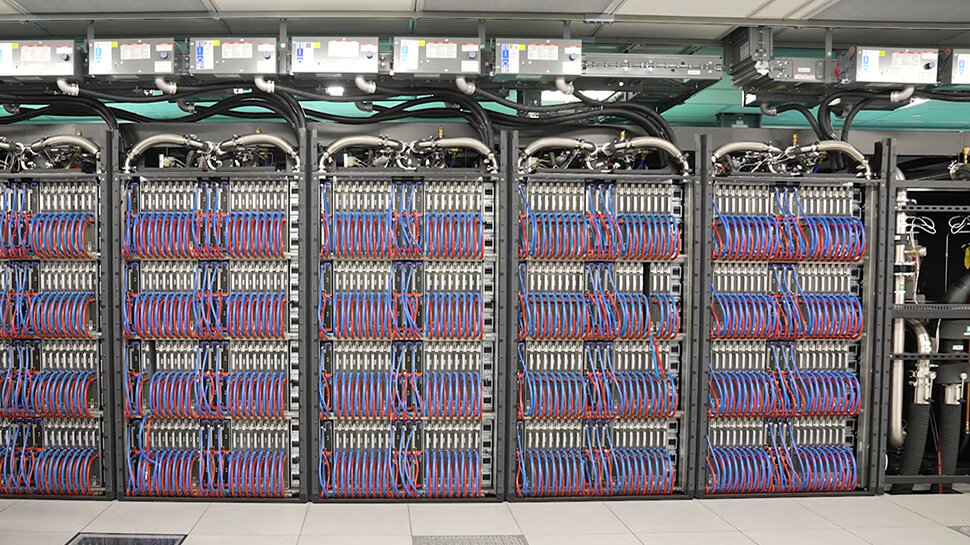Search the Community
Showing results for tags 'hpc'.
-
Few people will ever get to see inside a supercomputer for real, but it is possible to take a virtual tour. Nvidia previously opened the doors to Eos, one of the world's fastest supercomputers, and now Department of Energy's Argon National Laboratory has prepared a short 5-minute video guiding viewers through Aurora, its exascale supercomputer. Aurora is already one of the fastest supercomputers in the world. HPC Wire ranked it number #2 in its top 500 list in November 2023. But that ranking was achieved with just “half of Aurora running the HPL benchmark”. When fully up and running, Aurora will have a peak performance of about two exaflops and be tasked with solving important problems relating to climate change, human health, Material Science. As Argon says, thanks to supercomputers like Aurora, “problems that used to take years to solve now just take days.” 44,000 gallons of water cooling As the video shows, Aurora is so big that a special state-of-the-art building had to be built just to house it. The video also covers Aurora's stats, and they are staggering, as you might expect. “There are 300km of optical cabling, so that would reach from Chicago to St Louis. It covers 10,000 square feet, two NBA basketball courts. And Aurora is about 600 tons. That is as heavy as the biggest passenger airplane in the world. It has 160 racks that are 8 feet tall and arranged in eight rows.” Each Aurora rack has 64 blades, also called nodes, and each of those has six GPUs, two CPUs and RAM. Obviously Aurora generates a lot of heat, so there are 44,000 gallons of water flowing through pipes and cooling the supercomputer down. You can take the tour of Aurora in the video below. More from TechRadar Pro The world's most powerful supercomputers could one day heat your homeMost formidable supercomputer ever is warming up for ChatGPT 5Nvidia has opened the doors to Eos, one of the world's fastest supercomputers View the full article
-
We are excited to announce preview of Amazon EC2 P4de instances, our latest GPU-based instances that provide the highest performance for machine learning (ML) training and High-Performance Computing (HPC) applications such as object detection, semantic segmentation, natural language processing, recommender systems, seismic analysis, and computational fluid dynamics. View the full article
-
Available in GA today, you can now begin deploying Spot VMs in your Google Cloud projects to start saving now. For an overview of Spot VMs, see our Preview launch blog and for a deeper dive, check out our Spot VM documentation. Modern applications such as microservices, containerized workloads, and horizontal scalable applications are engineered to persist even when the underlying machine does not. This architecture allows you to leverage Spot VMs to access capacity and run applications at a low price. You will save 60 - 91% off the price of our on-demand VMs with Spot VMs. To make it even easier to utilize Spot VMs, we’ve incorporated Spot VM support in a variety of tools… Read Article
-
We are excited to announce the availability of Amazon EC2 P4d instances, the next generation of GPU-based instances that provide the best performance for machine learning (ML) training and high performance computing (HPC) in the cloud for applications such as natural language processing, object detection and classification, seismic analysis, and genomics research. P4d instances are powered by the latest NVIDIA A100 Tensor Core GPUs and provide first in the cloud 400 Gbps instance networking with support for Elastic Fabric Adapter (EFA) and NVIDIA GPUDirect RDMA (remote direct memory access) to enable efficient scale-out of multi-node ML training and HPC workloads. View the full article
-
Forum Statistics
42.4k
Total Topics42.2k
Total Posts
.png.6dd3056f38e93712a18d153891e8e0fc.png.1dbd1e5f05de09e66333e631e3342b83.png.933f4dc78ef5a5d2971934bd41ead8a1.png)


